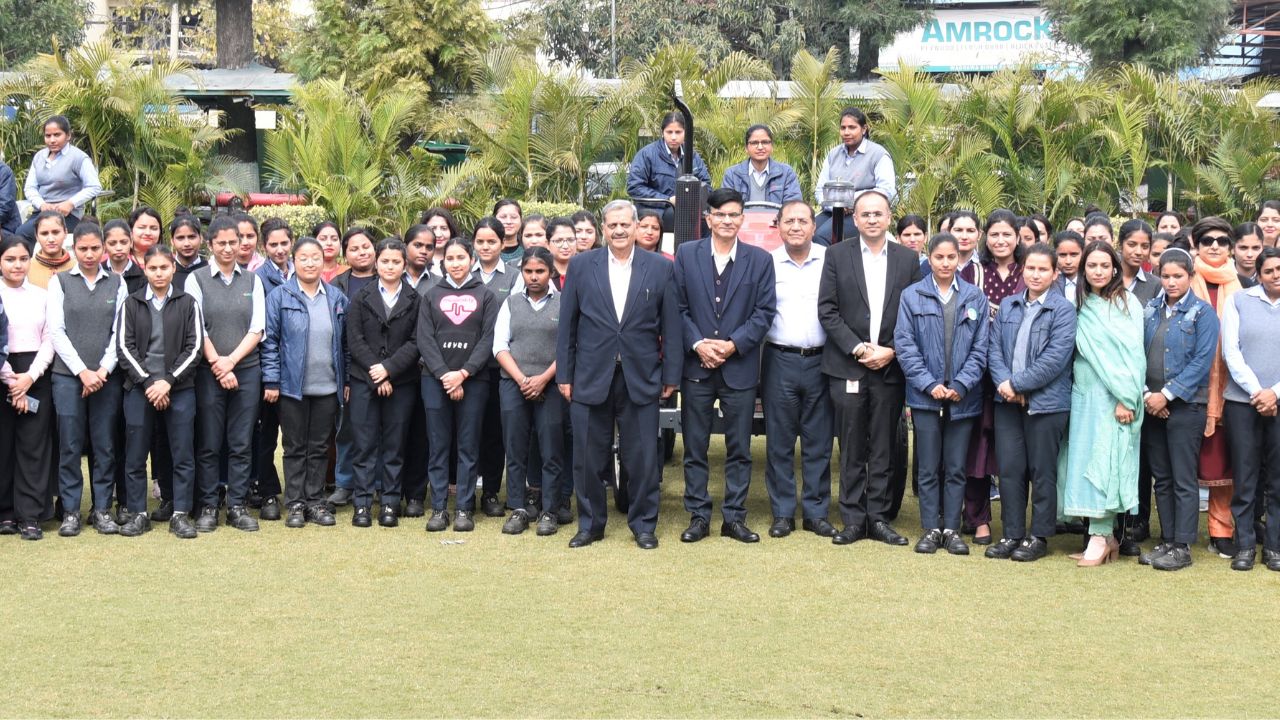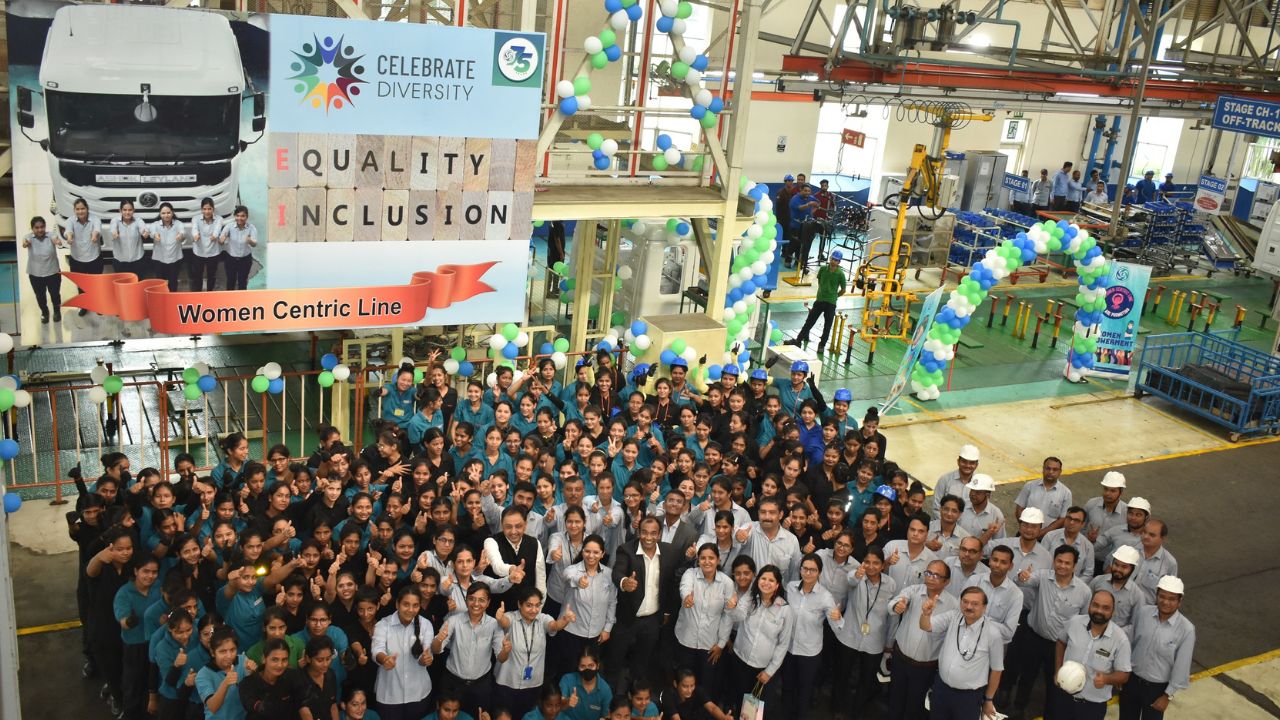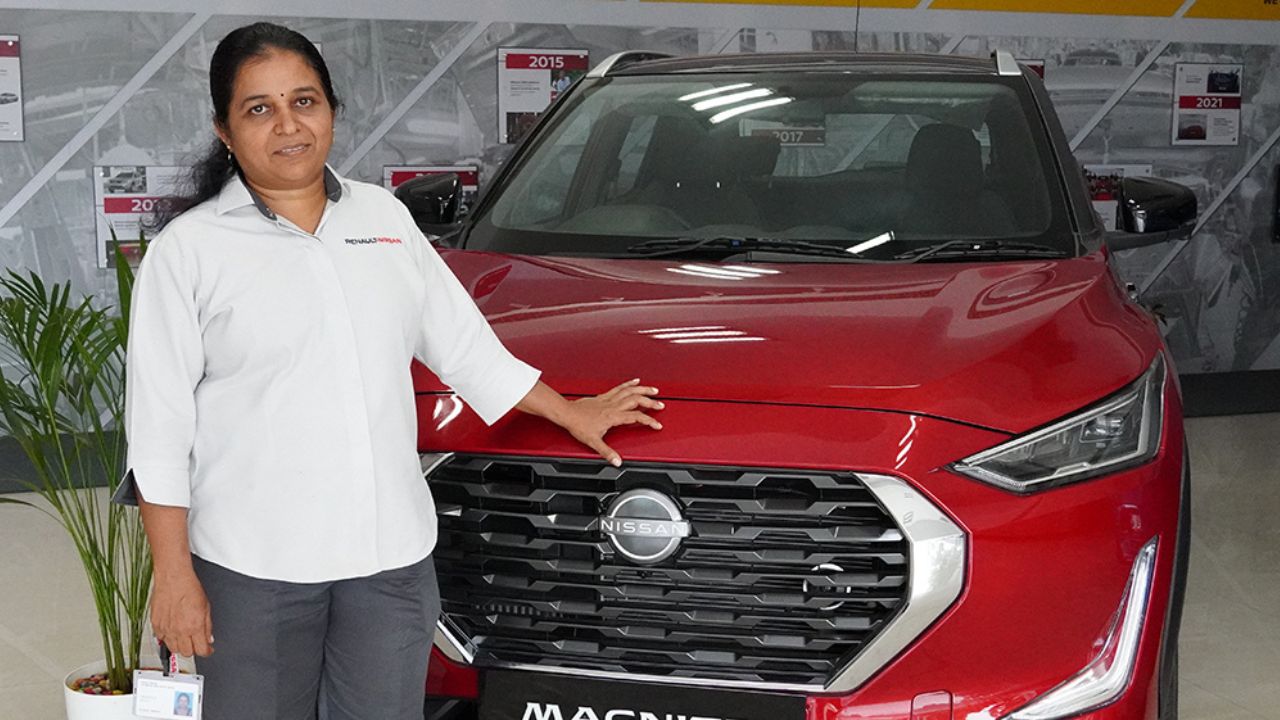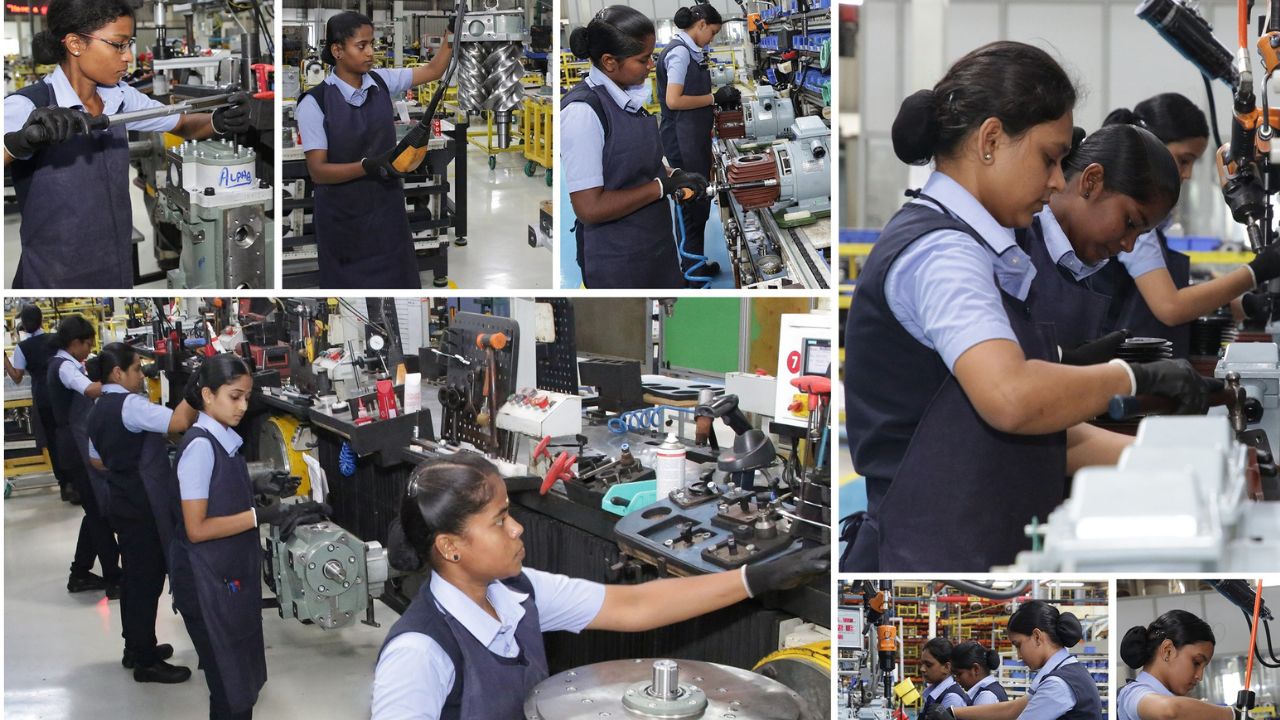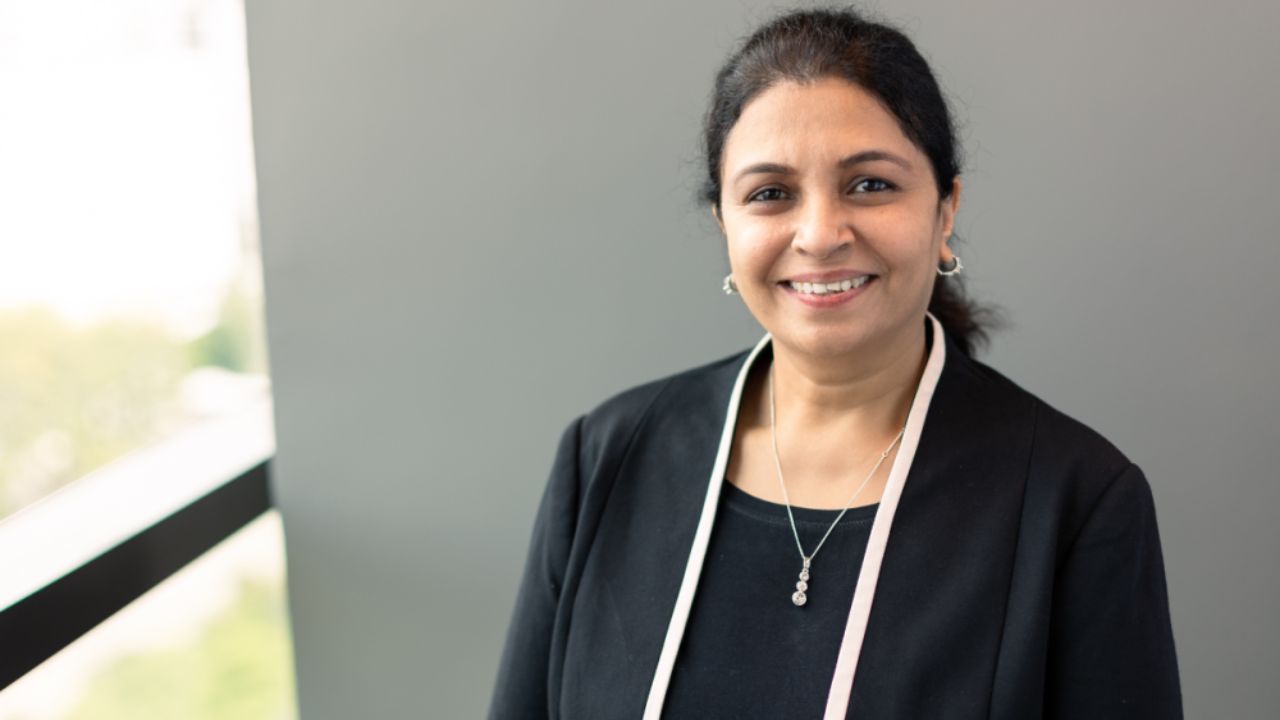Competence, Courage & Confidence!
#WomenAcesOfManufacturing #SujathaNarayan #WabtecIndia #AdityaBirlaGroup“It is not about being a man or a woman. That’s where I talk about the three Cs that I work on – Competence, Courage & Confidence. Firstly, organizations cannot compromise on competence. Secondly, you have to have the courage to step outside your comfort zone and reach out for opportunities. And thirdly, it is with confidence that this whole power comes in.”
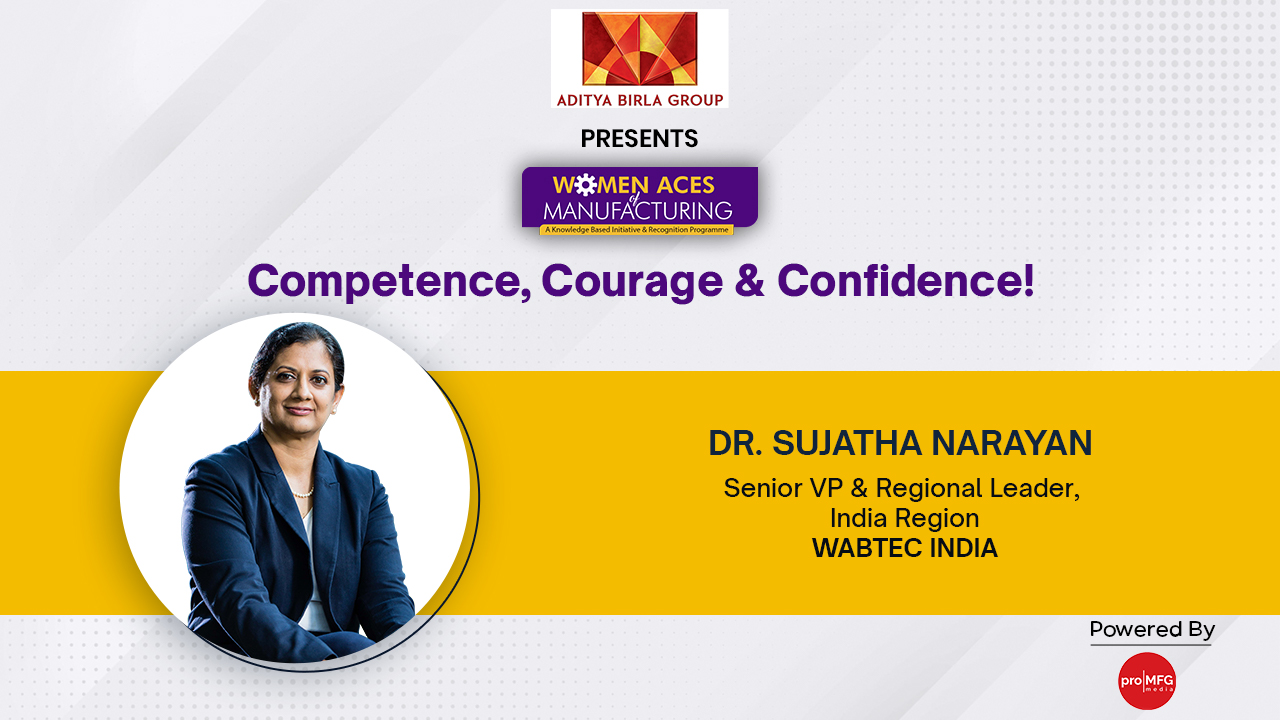
December 2022: It actually makes sense to encourage and promote diversity. In fact, there is enough data published about how diversity leads to better performance of companies, Dr. Sujatha Narayan, Senior Vice President & Regional Leader, India Region, Wabtec India, emphasizes in this exclusive interaction with Niranjan Mudholkar, Editorial Director, Pro MFG Media. This interview is conducted under the Women Aces of Manufacturing initiative presented by the Aditya Birla Group.
Do you think more women engineers are now taking their rightful place in the manufacturing as well as corporate space?
It’s an important question. The first part of the question is a mixed bag. Definitely, there has been some progress compared to maybe decades ago. But it is mixed in the sense that we see a lot more gender diversity in our engineering organization, and less in the manufacturing side, although that has improved as well. And some of it is starting with the fact that we don’t have enough women engineers. If you want to be in the manufacturing space, if you want to be in the process engineering, you need to be a mechanical engineer or electrical engineer. And I don’t think the country is producing enough women engineers in those spaces. Women, and generally people, are going into other areas like computer science or finance or banking or education and so on, but not into manufacturing. So that’s a little bit of a starting disadvantage. But I think it’s improving. I think every month and every year is better than the previous ones.
But at the same time, in India, we are also seeing fallout of women from the workforce. And this is also across the board. I’m talking broadly here and not about Wabtec. One of the reasons is that people are making more money, and so they don’t need two people to work. The bad news is they don’t need two people to work because actually for the women to go to work is very inconvenient. As an industry, we don’t have great childcare. We don’t have work from home policies; although I think Covid has come and really helped on that front. But we still don’t have flexi hours. There has to be a really focused effort on attracting talent, keeping talent and growing talent when it comes to women. Whether it’s engineering or manufacturing, it has to be something that organizationally you have to be very conscious about. When it comes to Wabtec, it’s something that we are very, very particular about. And there’s a tremendous amount of effort that is happening.
How does Wabtec attract women talent?
Our talent acquisition team and our human resources team are working with colleges. We go there, and we talk a lot about our technology, how we are part of nation building, and how interesting our work is. Today, with so much digitization, it’s not really hard work in our industry. You are not picking up heavy equipment and so on. In fact, if you go to our Marhowra plant, you will find more than 25 percent of people on the shop floor are girls. They are doing all activities on the shop floor like turning tables and melting, etc. It’s a very conscious decision that we have taken. But going back to what I was saying, we talk to colleges, and we recruit a lot of women. We have this LEAD programme; LEAD stands for Leadership Expertise and Accelerated Development. We have actually used that in our engineering organization very well. And we’ve recruited a lot of women engineers through that programme; they do the programme for a couple of years, and they get assimilated into the corporation.
Now, we have started rolling out this programme to our operational side as well. So, this year, we have some ‘LEAD’ people who come into our manufacturing. We use such programmes to attract youngsters as well as women into our organization. We have these Employee Resource Groups that celebrate diversity and inclusion to bring us together in ways that help us stand out, connect, belong, and grow. One such group is the Women of Wabtec forum, which was created to promote the importance of gender diversity across all levels of the organization through education, industry best practice sharing, and advocate development. It’s a homegrown network that encourages women to talk, share their issues, share best practices, gives them mentorship, and so on which really helps keep the women in the corporation. We understand that role models are the key for women to have the confidence to aspire to grow and take on challenges and to stay in the organization. So we spend a lot of time connecting with each other. For example, I have a monthly, a half a day schedule blocked in my calendar for any women in the organization to have a one on one with me. They talk to me about various topics; some of them are personal, some are professional. They discuss a lot of things with me like how to grow, how to handle issues and how to balance work and life and so on. Of course, there are a lot of other senior leaders in our organization who do this.
Why is it important to have more women in the industry?
Today, the industry and the customers are all becoming more and more diverse. But it’s not just about bringing in women for the sake of bringing in women! Today, there are women sitting at the table and they are making decisions about various things. That’s because if you have an organization that is extremely monolithic, whether it is on gender or geography or race or religion, you are not going to serve your customers and the industry well. So, it actually makes sense to encourage and promote diversity. In fact, there is enough data published about how diversity leads to better performance of companies. Wabtec is convinced about getting more women into the organization. We are doing a lot and I am sure we can do more. And we will continue down that path!
What can the industry really do to make more women come to manufacturing jobs?
I think we underestimate how poor our ecosystem is for childcare, parent care, and daily commute. These are some very fundamental issues that need to be addressed if we want women to join manufacturing. So, we need some strong voices that focus on this topic of good quality childcare and good quality parent care. Many people get to the age where they are dealing with both - taking care of children and taking care of parents. Let me share a personal example. In the beginning of 2021, my daughter was going through some issues related to exams, anxiety and things like that. So, I requested some time off, because she needed me. And my company didn’t bat an eyelid. They said, okay. Now, because over time, I had established my competence, I had a high level of credibility, and I had built a strong team that could cover for me in the short term. So, the company said to me: “Hey, do it!” Now, when corporations don’t do that, then women obviously make their own choices. So, the government, the corporations and the families, all the three can come together and help women get into the workforce, stay there and grow and be successful! In this context, initiatives like Women Aces of Manufacturing can play an important role!
Do you think organizations must work towards identifying high potential female employees early on and mentoring them for leadership positions?
As an individual, you need to be strong right. It is not about being a man or a woman. That’s where I talk about the three Cs that I work on. One is competence. Unless your performance speaks for itself and unless the organization believes that you are good at what you do, good things are not going to happen to you. So, organizations cannot compromise on competence. Secondly, there is courage. You have to have the courage to step outside your comfort zone and reach out for opportunities. Take on different things that can help grow your career. And thirdly, there is confidence. That is where this whole power comes in. You don’t have to sit in a meeting with 20 other women and men and say: “Hey, I am a woman,” and feel diffident about that. It should come naturally and should reflect in your conduct. So, these three characteristics - competence, confidence, courage are something that I use all the time. I think manufacturing organizations too can use these three Cs for encouraging and mentoring their employees.
NEWSLETTER
TRENDING ON PRO MFG
MORE FROM THE SECTION




